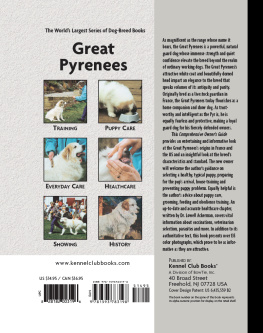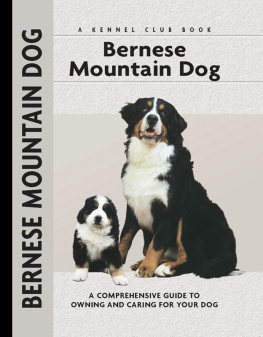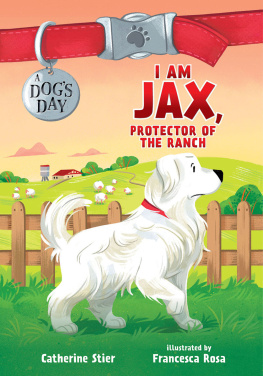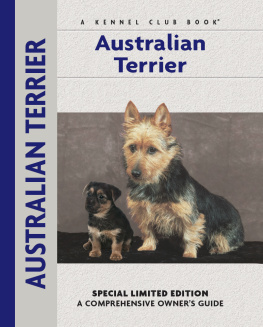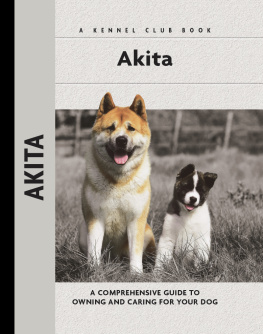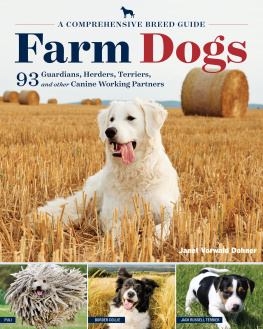Physical Characteristics of the Great Pyrenees
(from the American Kennel Club breed standard)
Head: Correct head and expression are essential to the breed. The head is not heavy in proportion to the size of the dog. It is wedge shaped with a slightly rounded crown.
Skull and Muzzle: The muzzle is approximately equal in length to the back skull. The muzzle blends smoothly with the skull. The cheeks are flat. A slight furrow exists between the eyes.
Neck: Strongly muscled and of medium length, with minimal dewlap.

Topline: The backline is level.
Eyes: Medium sized, almond shaped, set slightly obliquely, rich dark brown. Eyelids are close fitting with black rims.
Ears: Small to medium in size, V-shaped with rounded tips, set on at eye level, normally carried low, flat, and close to the head.
Nose: Black.
Teeth: A scissor bite is preferred, but a level bite is acceptable.
Foreleg: The legs are of sufficient bone and muscle to provide a balance with the frame. The elbows are close to the body and point directly to the rear when standing and gaiting. The forelegs, when viewed from the side, are located directly under the withers and are straight and vertical to the ground. Front pasterns are strong and flexible. Each foreleg carries a single dewclaw.
Coat: The weather resistant double coat consists of a long, flat, thick, outer coat of coarse hair, straight or slightly undulating, and lying over a dense, fine, woolly undercoat. The coat is more profuse about the neck and shoulders where it forms a ruff or mane which is more pronounced in males.
Shoulders: The shoulders are well laid back, well muscled, and lie close to the body. The upper arm meets the shoulder blade at approximately a right angle. The upper arm angles backward from the point of the shoulder to the elbow and is never perpendicular to the ground.
Body: The chest is moderately broad. Back and loin are broad and strongly coupled with some tuck-up.
Hindquarters: The angulation of the hindquarters is similar in degree to that of the forequarters. ThighsStrongly muscular upper thighs extend from the pelvis at right angles. The rear pastern (metatarsus) is of medium length and perpendicular to the ground as the dog stands naturally. The rear legs are of sufficient bone and muscle to provide a balance with the frame. Double dewclaws are located on each rear leg.
Size: The height at the withers ranges from 27 inches to 32 inches for dogs and from 25 inches to 29 inches for bitches. A 27 inch dog weighs about 100 pounds and a 25 inch bitch weighs about 85 pounds.
Tail: The tailbones are of sufficient length to reach the hock. The tail is well plumed, carried low in repose and may be carried over the back making the wheel, when aroused.
Feet: Rounded, close-cupped, well padded, toes well arched.
Color: White or white with markings of gray, badger, reddish brown, or varying shades of tan.

KENNEL CLUB BOOKS GREAT PYRENEES
ISBN 13: 978-1-59378-319-8
eISBN 13: 978-1-59378-984-8
Copyright 2004 Kennel Club Books A Division of BowTie, Inc.
40 Broad Street, Freehold, NJ 07728 USA
Cover Design Patented: US 6,435,559 B2 Printed in South Korea
All rights reserved. No part of this book may be reproduced in any form, by photostat, scanner, microfilm, xerography or any other means, or incorporated into any information retrieval system, electronic or mechanical, without the written permission of the copyright owner.
Photography by Isabelle Franais and Carol Ann Johnson, with additional photographs by
Paulette Braun, T.J. Calhoun, Alan and Sandy Carey, David Dalton, Bill Jonas, Michael Trafford and Alice van Kempen.
Illustrations by Patricia Peters
The publisher wishes to thank Gale B. Armstrong, Giovanni & Roberta Lazzeri Cardini, Marie-Claude Couty, Rhonda Dalton, Raymond Ducrey, Mrs. Beryl Lordy, Rocco Muraca, Michle Etienne Serclrat, Mrs. Janet Srodzinski and the rest of the owners of the dogs featured in this book.

A creation of the Basques, the Great Pyrenees is a unique, magnificent dog who is known as le Chien de Montagne des Pyrnes in its homeland and as the Pyrenean Mountain Dog in the UK.
Contents

Enter the world of the Basque country and meet the powerful Mountain Dog created there. Trace the Great Pyrenees from its home region to the Americas and Britain and observe the many faces of the breed as a livestock guardian, carting dog and more.
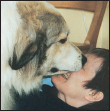
Find out about the unique qualities of the Great Pyrenees, its personality, versatility and requirements. From discussions of the breeds temperamental and physical traits, including hereditary health concerns, determine whether you are a suitable owner for this majestic mountain of a dog.
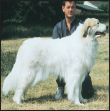
Learn the requirements of a well-bred Great Pyrenees by studying the description of the breed set forth in the American Kennel Club standard. Both show dogs and pets must possess key characteristics as outlined in the breed standard.
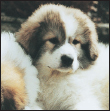
Find out about how to locate a well-bred Great Pyrenees puppy. Discover which questions to ask the breeder and what to expect when visiting the litter. Prepare for your puppy shopping spree. Also discussed are home safety, the first trip to the vet, socialization and solving basic puppy problems.
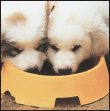
Cover the specifics of taking care of your Great Pyrenees every day: feeding for the puppy, adult and senior dog; grooming, including coat care, ears, eyes and nails and bathing; and exercise needs for your dog. Also discussed are the essentials of dog identification.

Begin with the basics of training the puppy and adult dog. Learn the principles of house-training the Great Pyrenees, including the use of crates and basic scent instincts. Enter Puppy Kindergarten and introduce the pup to his collar and leash and progress to the basic commands. Find out about obedience classes and other activities.
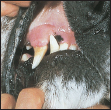
By Lowell Ackerman DVM, DACVD
Become your dogs healthcare advocate and a well-educated canine keeper. Select a skilled and able veterinarian. Discuss pet insurance, vaccinations and infectious diseases, the neuter/spay decision and a sensible, effective plan for parasite control, including fleas, ticks and worms.

